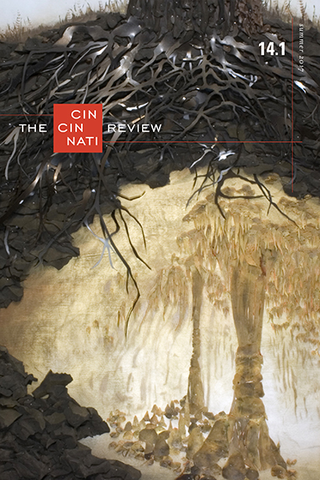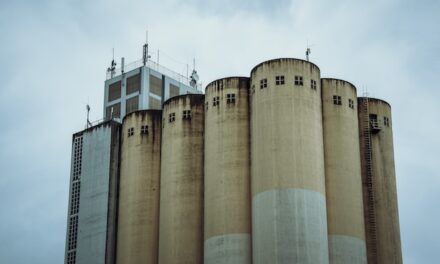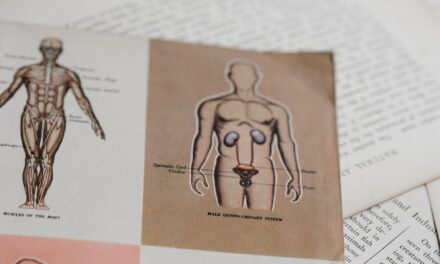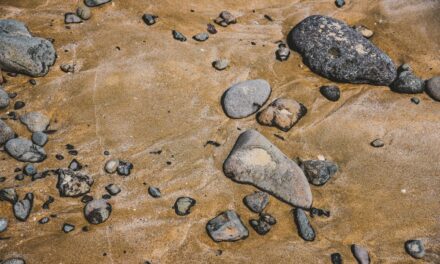As a slight change of pace from our usual “What We’re Reading” posts, CR volunteer Ben Kleier has chosen to discuss Lana Shuttleworth’s unique artwork, which we’re very excited to have in issue 14.1. Ben is a student in the UC master’s program in professional writing and has been working at the Cincinnati Art Museum in a variety of roles for the past two years. He’s a sculptor and painter and an all-around good dude.
For issue 14.1 of The Cincinnati Review, the artwork of Lana Shuttleworth will be complimenting the literature in the journal. She uses construction cones and stage flooring to create three-dimensional landscapes that can be viewed from various focal points and areas of detail that create a clear visual hierarchy in her compositions. She cuts industrial and manufactured objects to represent ephemeral environments that seem to precede an industrial reality.
Her piece Underground will be the cover piece for our summer issue. While her materials are unexpected, the textures and shadows in each piece set her work apart. The vantage point and the position of the viewer drastically change the shapes and shadows of the composition. In Underground, the juxtaposition of the industrial with the orderly use of construction con es comments on more than industry and waste. The disorderly root system and layering of the soil between these roots represent a less than perfect reality but reaffirm the raw energy and anchoring of a strong and healthy tree. The strong vertical marks on the cave create a sturdy structure, but the light behind the stalagmites and stalactites infuses the space with an uncertain or undefined beauty. Even the contrast in color and size of the tree to the cave suggests a layering and some kind of distance between the two.
es comments on more than industry and waste. The disorderly root system and layering of the soil between these roots represent a less than perfect reality but reaffirm the raw energy and anchoring of a strong and healthy tree. The strong vertical marks on the cave create a sturdy structure, but the light behind the stalagmites and stalactites infuses the space with an uncertain or undefined beauty. Even the contrast in color and size of the tree to the cave suggests a layering and some kind of distance between the two.
Shuttleworth’s contribution to the Cincinnati Review continues the tradition of mixing visual narratives with literary ones. Shuttleworth’s work uses cones that have lived out their lives on construction sites and developing urban zones. As she says on her website, the scraped, dented, and scarred cones are contextualized objects that have “surviv[ed] a fast and relentless urban existence— and that is precisely where so many of us find ourselves these days.” Her compositions contrast urban existence with an alternative world view that shift societal values. The viewer is offered a work of art to help him or her stop for a moment and think of what exists beyond the daily rituals and tasks that comprise urban life.
Shuttleworth’s dynamic compositions create a strong sense of narrative and convey complex ideas. Her themes compliment the literary perspective from a visual standpoint. Publishing Shuttleworth’s art alongside literature provides an experience unique to The Cincinnati Review. Despite the similarities between fine art and literature, the literary journal is the only medium where these art forms are exhibited together. As a portable object, the journal provides the opportunity for the reader to revisit and reassess how art and literature might be understood. Art museums might exhibit ekphrastic poetry, illuminated manuscripts, and illustrated books. Art galleries may host readings, but only the literary magazine consistently presents the two forms together, existing as cooperative partners that maintain their individuality for the enjoyment of the reader.










